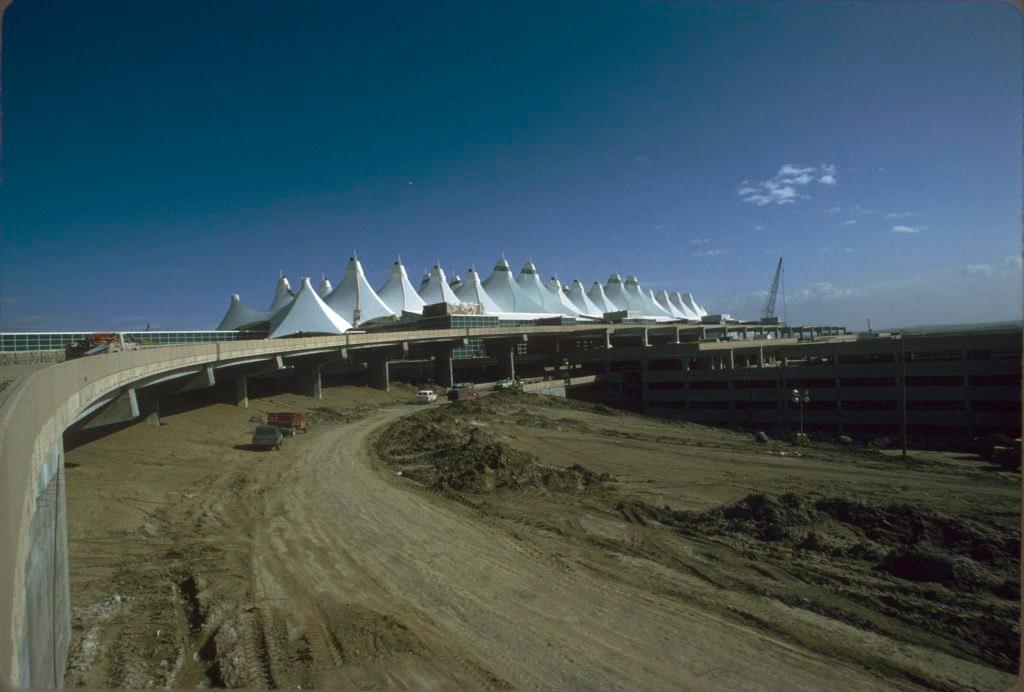
On a dirt road east of Brighton sits the Vantage Estates community. More than 30 homes are arranged on varying size acreage plots. Jerilyn and Tom James have lived there for 35 years.
Jerilyn raised horses and trained them for shows, while her husband, Tom, worked for Coors on the night shift. They loved the peace and quiet of their home that was surrounded by wheat fields. They were far enough from the city to be rural, but Tom could still drive to work.
Then in 1995, that all changed.
"The first day that DIA opened and the first plane that came over, I had horses run through the fences. I had my German shepherd dogs go flat to the ground,” Jerilyn said. “They were afraid the world was ending. Everything shook. It was horrible. And then it continued.”
The noise has been a contentious issue for Denver International Airport and Adams County ever since the airport opened. Denver annexed land from Adams County to build DIA, and then the counties joined in an intergovernmental agreement. It outlined land use regulations on and around DIA and how noise would be monitored, including what would happen when the noise was too loud for Adams County residents.
The portion of the agreement that deals with noise has been litigated twice, and now, Adams County and Denver will try yet again work out their differences over noise modeling in a courtroom this September.

Denver International Airport, circa 1995.
The James’ property is 1 mile from Denver International Airport’s property line and 18 miles from the front door of the airport. The noise from planes flying over their home was continuous for years after the airport was built, they said.
Their neighbors, Joe and Pat Ross, also struggled with the noise.
Pat remembers coming home to a spiral bound notebook full of the times and decibel readings of planes that had flown over their house while she was gone. Joe would spend part of his day recording the flights to report to the DIA noise hotline in the hopes that they would do something about the noise.
“You couldn’t hear yourself think some days,” Joe said. “And you might have 50 or 60 airplanes over your house in the afternoon or early morning.”
After years of dealing with the noise, the couples were awarded $20,000 each to soundproof their homes. The James’ installed new windows, carpeting and air conditioning. Before the noise, they would cool their house by leaving the windows open, but with the noise they needed the windows closed. The Ross’s installed brick siding on their main floor, and new sound-abating siding on their upper floor.
The money came from DIA as a result of the agreement between the counties, which stipulates a fine for every time a plane exceeds a certain noise threshold known as a Class II noise violation. Each Class II violation carries a $500,000 fine that DIA has to pay to Adams County.

In total, DIA has paid out $46 million in noise violation fees since the airport opened. Some of the money was the result of a lawsuit in 2002 when the counties amended the agreement, and the rest was settled between the counties. According to Adams County, most of the money has gone to residents for soundproofing, and the rest went to administrative costs and purchasing open spaces to prevent development too close to the airport.
But now, there is disagreement over the formulas used to calculate noise violations. DIA has not reported any noise violations since 2014, a spokesperson said in an email. But Adams County is using a new formula to calculate violations, and from 2014-16 the county alleges more than 90 fee-generating violations.
"We have data that proves that the modeling system [used by DIA] is not producing accurate results," said Jim Siedlecki, Adams County spokesman. “We know that, our attorneys know that, our experts know that, and soon the court will know that."
In a statement, DIA said it’s confident in the noise monitoring system it’s been using for 25 years.
“Adams County has chosen to litigate an issue despite Denver’s willingness to address their concerns. Adams County is making numerous unfounded allegations that are based on unproven and imprecise noise collection and measurement methods,” the statement reads.
As for the Jameses, they probably won’t wait to see what happens in court.
"Colorado and Adams county are getting so bad anymore we're really thinking about Wyoming,” Tom said, “so if we can find the right deal we're probably gonna move."








